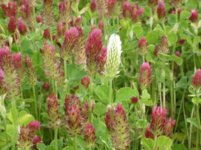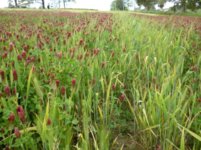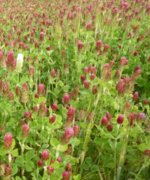Tom_in_TN
Well-Known Member
Here is an idea on how to 1) condition your soil 2) grow your own nitrogen 3) add potash and 4) sweeten the dirt with agricultural lime.
In the fall, September to November, scatter wood ash and till the soil in the area to be improved and planted next year. Scatter Crimson Clover seed and AG lime on top of the soil (no need to rake it into the soil). Water it in or let the rain do that job.
Here are a couple of pics to demonstrate just how beneficial this can be to improve the soil, 1st image shows Crimson Clover grown in a burned over area last fall and the 2nd image is next to the burned area that was not burned and no AG lime was applied:


In the fall, September to November, scatter wood ash and till the soil in the area to be improved and planted next year. Scatter Crimson Clover seed and AG lime on top of the soil (no need to rake it into the soil). Water it in or let the rain do that job.
Here are a couple of pics to demonstrate just how beneficial this can be to improve the soil, 1st image shows Crimson Clover grown in a burned over area last fall and the 2nd image is next to the burned area that was not burned and no AG lime was applied:







